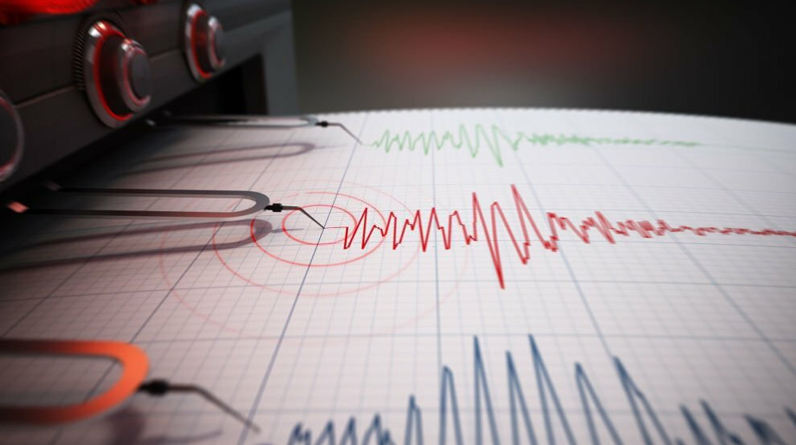
Expanding modern technologies have continually offered new opportunities in various fields, particularly in sensing and object detection. One such technology that has sparked significant interest due to its wide range of applications is ultrasonic sensing. This article expounds on how ultrasonic sensors can be harnessed to master the art of object detection.
Introduction to Ultrasonic Sensors
Ultrasonic sensors operate on a principle similar to sonar, which is used for navigation and detection by bats, ships, and submarines. They generate high-frequency sound waves and evaluate the echo received back from the objects near them. The time between sending the signal and receiving the echo is calculated by the sensor to determine the distance to the object.
The HC-SR04 Ultrasonic Sensor stands out as one of the most commonly used ultrasonic sensors in object detection due to its high efficiency and accuracy. It offers a consistent and reliable measurement range of 2cm-400cm. Its operation relies on the emission of an ultrasonic signal, which then waits for the signal to bounce back from an object. The time lapse between the signal emission and reception allows it to calculate the distance of the object with a high degree of precision.
The HC-SR04 Ultrasonic Sensor, with its broad range of applications and high precision, serves as a key tool in mastering object detection.
Key Features of Ultrasonic Sensors
- Range: Ultrasonic sensors cover a wide range of distances, typically from a few centimeters to several meters, making them suitable for diverse applications.
- Accuracy: These sensors offer high accuracy in distance measurement, largely eliminating errors. They can detect objects within a few millimetres of their actual position.
- Non-contact detection: The non-contact nature of ultrasonic sensors makes them ideal for applications where physical contact with objects can be detrimental, such as fluid levels or proximity sensing.
- Versatile: Ultrasonic sensors can detect any object, irrespective of its material, color, or transparency. This makes them versatile across various industries.
- Robustness: The sensors are robust to environmental factors such as dust, light, or moisture and can operate efficiently even in harsh conditions.
- Cost-effective: Ultrasonic sensors provide high value for their cost, offering reliable and high-performance object detection at a relatively low price point.
These features collectively contribute to the widespread adoption of ultrasonic sensors in object detection across various sectors, including industrial automation, automotive, and robotics.
The Working Mechanism of Ultrasonic Sensors
So,how does an ultrasonic sensor work? Ultrasonic sensors work through a fascinating yet simple mechanism:
- Transmission: The sensor’s piezoelectric crystals vibrate when an electrical signal is applied, creating ultrasonic waves.
- Reflection: These sound waves move through the air until they encounter an object and are reflected towards the sensor.
- Reception: The sensor then picks up the reflected waves. The piezoelectric crystals generate an electrical signal upon contact with these returned waves.
- Time Calculation: The sensor measures the time difference between the transmission and reception. This is known as “Time of Flight.”
- Distance Calculation: Since the speed of sound in air is constant (~343.2 meters per second at sea level at room temperature), the sensor calculates the distance of the object using the formula:
Distance = (Speed of Sound x Time of Flight) / 2
It’s vital to note that the division by 2 is necessary because the sound wave has to travel to the object and back to the sensor. The entire process happens almost instantaneously, allowing ultrasonic sensors to perform real-time object detection with admirable accuracy.
The longer the time taken, the farther the object is from the sensor. The shorter the time, the closer the object. A simple calculation of speed, time, and distance allows the sensor to pinpoint the exact location of an object.
Applications of Ultrasonic Sensors in Object Detection
Ultrasonic sensors’ wide range of applications testifies to their versatility, efficiency, and robustness. Here are some of the key areas where ultrasonic sensors are employed in object detection:
- Industrial Automation: Ultrasonic sensors are widely used in industries for detecting and measuring the position of objects on production lines. They ensure smooth operation and safety in automated systems.
- Automotive Industry: In vehicles, these sensors are commonly used for parking assistance systems. They detect the proximity of obstacles and provide feedback to the driver, reducing the risk of collision.
- Robotics: Robots use ultrasonic sensors for navigation and obstacle avoidance. They help robots move autonomously without hitting any objects in their path.
- Healthcare: In medicine, ultrasonic sensors play a crucial role in various imaging and diagnostic procedures, such as ultrasound scans.
- Agriculture: These sensors are used in automated irrigation systems to measure the level of water in reservoirs.
- Security Systems: Ultrasonic sensors are incorporated in security alarms to detect any unusual movement or presence.
- Liquid Level Measurement: In industries where monitoring the level of liquids in tanks is necessary, ultrasonic sensors provide a non-contact method of detection, preventing any contamination.
As we continue to explore new technological horizons, the applications of ultrasonic sensors are expected to expand significantly, making them an integral part of future innovations.
Advantages and Disadvantages of Ultrasonic Sensors
It’s vital to understand not only the benefits but also the limitations of ultrasonic sensors.
Advantages
- Broad sensory range
- High resistance to environmental influences like dust and smoke
- Ability to detect a wide range of objects, irrespective of material
- No contact with objects, reducing the chances of wear and tear
Disadvantages
- Susceptibility to temperature fluctuations and wind
- Difficulties in detecting soft, thin, or small objects
- Sound waves may be reflected away from the sensor if the object isn’t positioned correctly
While these limitations exist, understanding them is key to mastering the use of these sensors. Perfect application often stems from strategic positioning to lessen the impact of these weaknesses.
How to Integrate Ultrasonic Sensors for Better Object Detection
For the best use of ultrasonic sensors in object detection, consider the following critical aspects:
- Sensor Placement: The sensor should be placed such that it’s unlikely to receive “false alarms” from nearby objects.
- Calibration: To ensure accurate readings, the sensor must be properly calibrated according to the parameters of the task.
- Sound Wave Angles: Understanding the angles at which sound waves are emitted and how they bounce back can significantly impact the sensor’s effectiveness.
Taking the time to fully understand, apply, and adjust these factors will guarantee the best use of ultrasonic sensors for object detection.
Wrapping Up
There is no denying that mastering object detection with ultrasonic sensors is as exciting as it is fruitful. It might take some time to grasp the subtle aspects of this technology’s operation, but the broad application vista, cost-effectiveness, and efficiency make this journey worth undertaking.
The future of object detection rests heavily on the shoulders of sensor technologies like these, and understanding their function and application is a step into the technical future. From robotics and automotive assistance to security systems, ultrasonic sensors mark a significant leap in aligning technology with everyday utility and business solutions.
Understanding ultrasonic sensors is not just a leap in technological knowledge but a stride into the world of endless possibilities that modern sensing technologies offer. Now it’s your turn to unleash the power of this technology and master the art of object detection.





